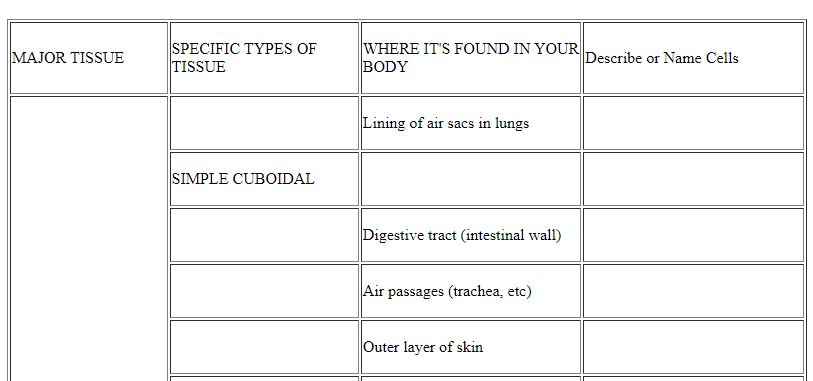Organize Tissue Types with a Chart

-
Epithelial Tissue: This tissue covers body surfaces, lines cavities and organs, and forms glands. It's characterized by closely packed cells arranged in layers. Epithelial tissues serve various functions, such as protection, absorption, secretion, and sensation. Examples include the skin epidermis, the lining of the digestive tract, and the epithelium of glands.
-
Connective Tissue: Connective tissue provides support, connects, and separates different types of tissues and organs in the body. It consists of cells, fibers, and an extracellular matrix.
Connective tissue includes types:
- Loose connective tissue (e.g., areolar tissue)
- dense connective tissue (e.g., tendons and ligaments)
- cartilage
- bone
- adipose tissue
- blood.
- Muscle Tissue: Muscle tissue is responsible for movement and generating force within the body. There are three types of muscle tissue:
- Skeletal Muscle: Found attached to bones and responsible for voluntary movements.
- Smooth Muscle: Located in the walls of internal organs and blood vessels, controlling involuntary movements.
- Cardiac Muscle: Exclusive to the heart, facilitating its rhythmic contractions to pump blood throughout the body.
- Nervous Tissue: Nervous tissue is specialized for communication and control. It consists of neurons (nerve cells) that transmit electrical impulses and support cells called neuroglia or glial cells.
Nervous tissue forms the brain, spinal cord, and nerves, allowing for the transmission of signals for sensation, coordination, and regulation of bodily functions.

